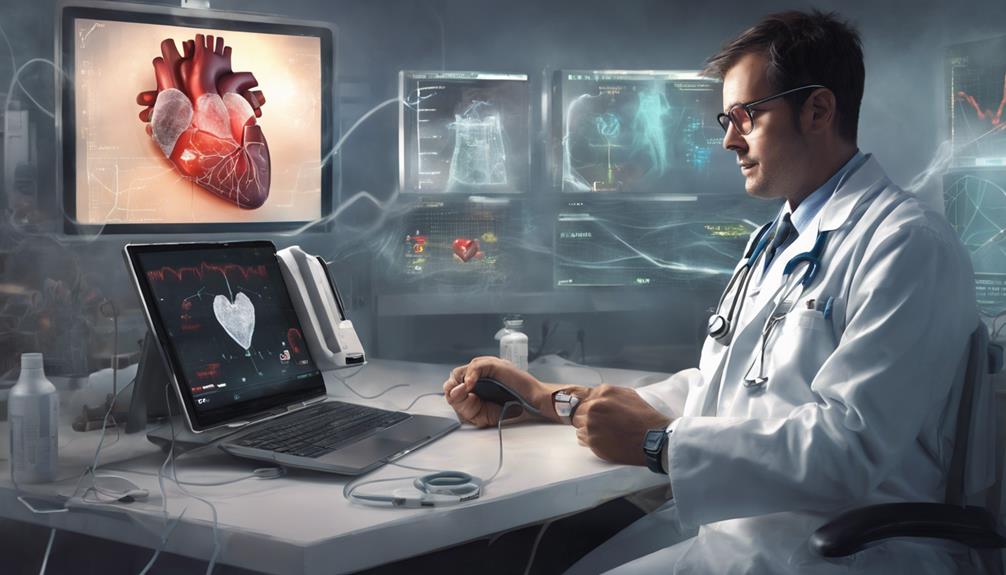The integration of technology into healthcare has ushered in a new era of possibilities, reshaping the landscape of medical practices and patient care. From artificial intelligence optimizing treatment plans to wearable devices monitoring health in real time, the impact of innovation is profound. However, beyond the surface level lies a realm of intricate developments that are transforming healthcare in ways that are yet to be fully realized. The intersection of technology and medicine continues to evolve, promising groundbreaking advancements that hold the potential to revolutionize the entire healthcare industry.
Key Takeaways
- Electronic Health Records and telemedicine improve healthcare accessibility.
- AI and robotics enhance diagnostic accuracy and surgical precision.
- Communication tools and cloud storage enhance collaboration among healthcare providers.
- Predictive analytics and remote monitoring optimize patient outcomes and personalized care.
Electronic Health Records (EHRs)
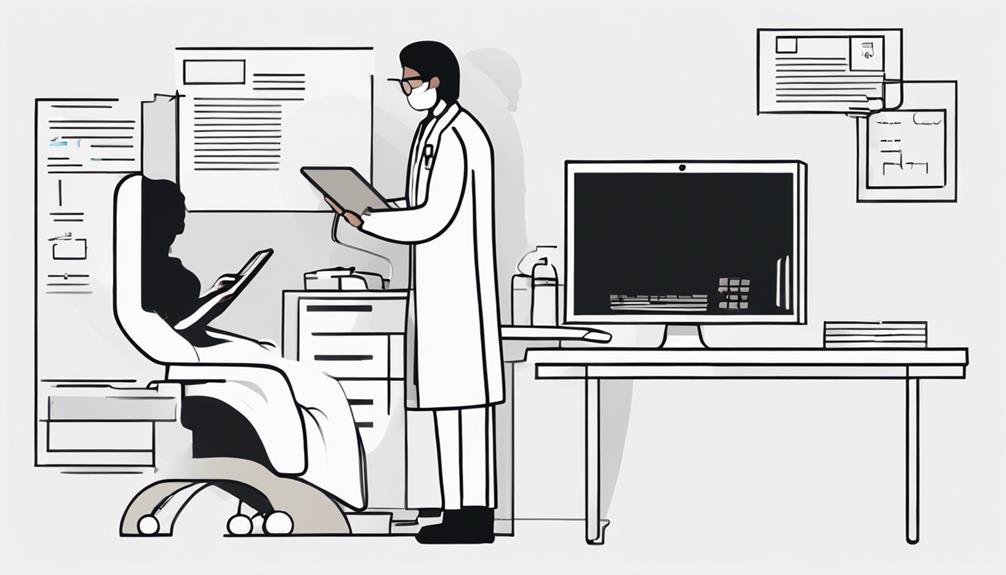
The adoption of Electronic Health Records (EHRs) in healthcare has revolutionized the storage and management of patient data, replacing traditional paper-based medical records with secure and accessible digital systems. EHRs play a crucial role in improving patient safety by reducing errors and enhancing communication among healthcare providers. Through these digital records, healthcare professionals can better coordinate care, leading to improved patient outcomes.
One significant advantage of EHRs is the quick access they provide to patient information, enabling healthcare providers to make informed decisions promptly. This efficiency not only enhances the quality of care delivery but also contributes to better health outcomes for patients. Moreover, the adoption of EHRs has modernized healthcare systems, streamlining patient care management processes. Overall, the integration of Electronic Health Records into healthcare practices marks a substantial advancement in the industry, emphasizing the importance of leveraging technology to enhance patient care and safety.
Artificial Intelligence (AI) in Healthcare
Utilizing advanced algorithms and data analysis, Artificial Intelligence (AI) is transforming the landscape of healthcare by enhancing diagnostic accuracy and personalizing treatment plans. AI in healthcare leverages machine learning to analyze extensive patient data, aiding in disease diagnosis and outcome prediction with higher precision. AI-powered chatbots play a crucial role in delivering personalized healthcare advice and support to patients, thereby improving the overall patient experience. Furthermore, machine learning algorithms enable healthcare providers to tailor treatment plans based on individual health data and medical histories, optimizing patient care outcomes.
Moreover, AI in healthcare facilitates the efficient allocation of resources within healthcare systems, leading to improved resource management and utilization. By providing data-driven insights, AI technologies empower healthcare professionals with valuable information to enhance treatment strategies and ultimately improve patient outcomes. In summary, the integration of artificial intelligence in healthcare is revolutionizing the industry by revolutionizing diagnostic capabilities, treatment personalization, and resource optimization for the benefit of both patients and healthcare providers.
Wearable Health Technology

Artificial Intelligence (AI) in healthcare has paved the way for significant advancements, and now shifting focus to the realm of Wearable Health Technology unveils a new frontier in personalized health monitoring and management. One in five Americans utilizes wearable health technology, such as smartwatches and fitness trackers, for real-time health monitoring. These devices offer crucial health insights like heart rate and sleep patterns, empowering users to actively manage their well-being. By tracking daily activities, these wearables encourage individuals to adopt healthier lifestyle choices, consequently enhancing overall health outcomes. The real-time monitoring capabilities of wearable technology play a pivotal role in the early detection of health issues, enabling timely interventions for improved treatment results. Through promoting self-awareness and proactive health management, wearable health technology is transforming how individuals interact with their health and well-being, making it an indispensable tool in the pursuit of a healthier lifestyle.
Robotics in Medical Procedures
Advancements in medical technology have ushered in a new era of precision and efficiency through the integration of robotics in various medical procedures. Robotics play a crucial role in enhancing the outcomes of medical interventions, particularly in surgical settings. Surgical robots, known for their precision and flexibility, empower surgeons to perform minimally invasive procedures with greater accuracy, leading to faster recovery times and reduced risks of complications for patients. These robotic systems excel in tasks requiring high precision and dexterity, augmenting the capabilities of healthcare providers during intricate surgical maneuvers. By enabling minimally invasive surgeries, robots contribute to decreased blood loss, lower postoperative pain levels, and shorter hospital stays for individuals undergoing procedures. Moreover, the consistent accuracy exhibited by robotic assistance in healthcare settings enhances overall efficiency by executing repetitive tasks flawlessly. The expanding use of robotics in medical procedures reflects ongoing technological advancements and applications across diverse medical specialties, promising continued improvements in patient care and surgical outcomes.
Telemedicine and Virtual Consultations
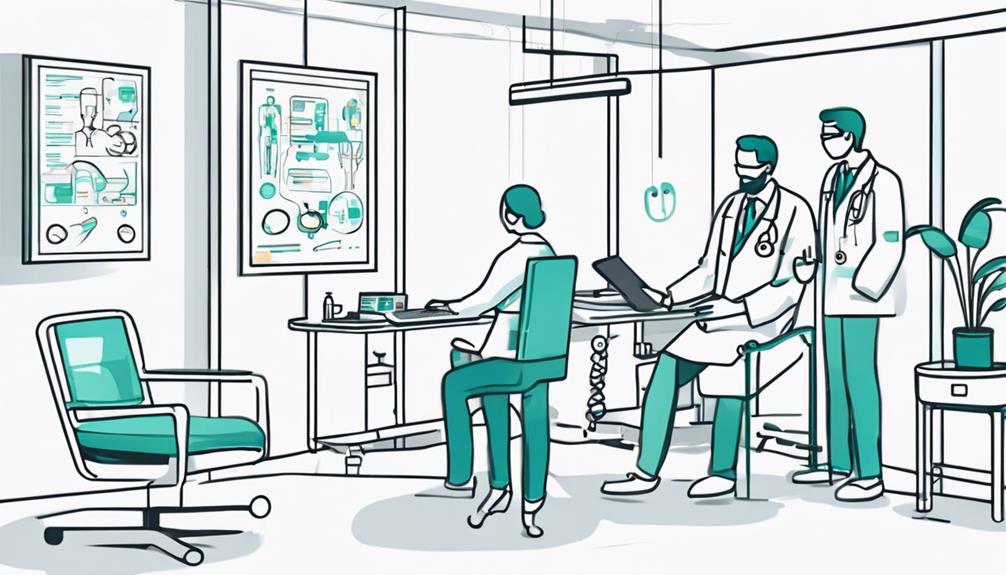
Telemedicine and virtual consultations have revolutionized healthcare delivery by enabling remote patient monitoring, granting access to specialized care, and offering enhanced convenience for patients. These modalities have proven particularly valuable during the COVID-19 pandemic, ensuring continuity of care while minimizing the risk of exposure to infectious diseases. The ability to connect with healthcare providers from anywhere via telemedicine has transformed the traditional patient-provider interaction, making quality healthcare more accessible and convenient.
Remote Patient Monitoring
Remote patient monitoring, facilitated through telemedicine and virtual consultations, revolutionizes healthcare delivery by providing real-time medical assessments from the comfort of patients' homes.
- Allows real-time consultations and check-ups remotely.
- Increases healthcare accessibility for patients in remote areas.
- Reduces travel time and costs for patients while ensuring timely medical care.
This innovative approach has become increasingly important, especially during the COVID-19 pandemic, as telehealth visits have surged. By enabling specialists to remotely diagnose and treat patients, telemedicine enhances overall healthcare access and outcomes. The convenience, efficiency, and effectiveness of remote patient monitoring highlight its potential to transform healthcare delivery and improve patient experiences.
Access to Specialists
The utilization of virtual consultations and telemedicine services has significantly expanded specialist access for patients, transcending traditional geographical constraints. Telemedicine has seen a 154% increase in virtual consultations in 2020, indicating the rapid adoption of remote healthcare services. By leveraging telemedicine, patients can access specialists across various fields, including mental health, without the need for in-person visits. This approach not only reduces patient wait times but also enhances healthcare accessibility, with 77% of patients reporting quicker access to care through virtual consultations. Particularly beneficial for individuals in rural or underserved areas, remote access to specialists is revolutionizing healthcare delivery by breaking down barriers to specialized care.
| Benefits of Telemedicine and Virtual Consultations |
|---|
| Expanded access to specialists |
| Reduced patient wait times |
| Enhanced healthcare accessibility |
| Greater convenience for rural or underserved areas |
| Improved healthcare delivery |
Enhanced Patient Convenience
The widespread adoption of virtual consultations and telemedicine services has fundamentally reshaped the landscape of patient convenience in accessing healthcare services.
- Telemedicine and virtual consultations provide convenient access to healthcare services from home, reducing the need for in-person visits.
- Virtual consultations save time and travel costs for patients by allowing them to connect with healthcare providers remotely.
- Remote care options like telemedicine offer flexibility in scheduling appointments, catering to busy lifestyles.
These advancements in technology not only enhance patient convenience but also improve accessibility to healthcare, particularly for individuals with limited mobility or living in remote areas. Telemedicine facilitates consultations with specialists who may not be geographically accessible, further enhancing the overall patient experience.
3D Printing in Healthcare
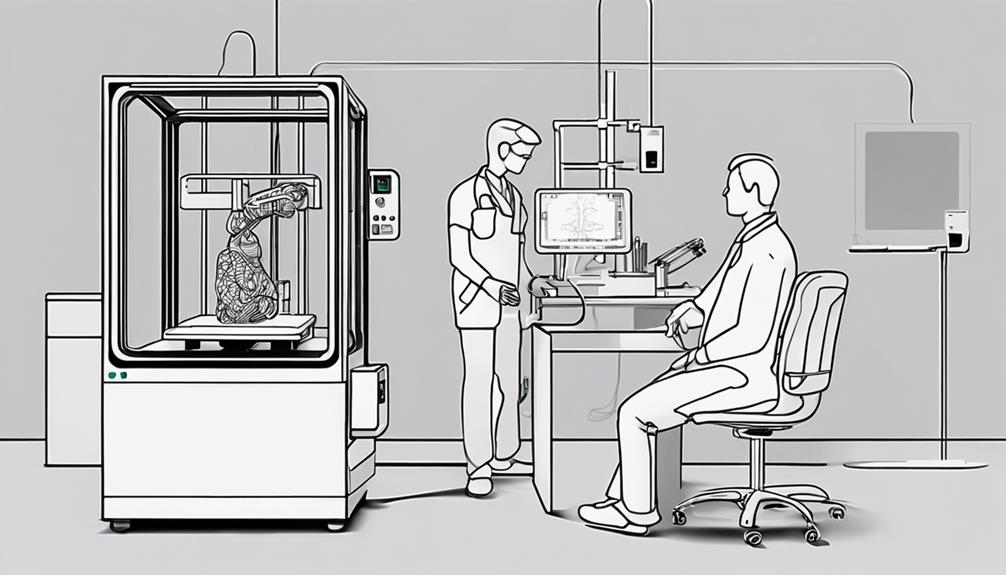
Utilizing cutting-edge technology, 3D printing in healthcare revolutionizes the creation of customized medical devices and implants tailored to individual patients' unique anatomical structures. This innovative approach allows for the production of patient-specific solutions, enhancing personalized care in the medical field. 3D printing plays a crucial role in visualizing intricate surgical procedures by generating detailed models that aid in pre-surgical planning and serve as valuable tools for training purposes.
Moreover, the application of 3D printing extends to regenerative medicine and tissue engineering, where it enables the development of tailored biological constructs to support tissue regeneration and repair. Rapid prototyping facilitated by 3D printing allows for the efficient iteration and testing of medical devices, leading to improved outcomes and enhanced patient safety. The integration of 3D printing technology in healthcare represents a significant advancement in treatment strategies, emphasizing precision, customization, and innovation in the delivery of medical care.
Augmented Reality (AR) for Training
Augmented Reality (AR) technology has revolutionized healthcare training by offering immersive simulations that allow medical professionals to practice procedures in a realistic virtual environment. This innovative approach enhances learning outcomes as users can interact with virtual patient scenarios, gaining hands-on experience and improving their skills. By providing a cost-effective and scalable solution, AR training reduces the reliance on traditional cadaver labs while increasing retention rates and overall competency among healthcare professionals.
AR in Simulation Training
Incorporating augmented reality (AR) technology into simulation training for healthcare professionals revolutionizes experiential learning in the medical field. AR simulations allow healthcare professionals to immerse themselves in realistic virtual environments, enhancing hands-on learning by overlaying digital information on real-world scenarios. This technology offers interactive experiences for medical training, enabling students to visualize complex anatomical structures and practice surgical techniques in a safe, controlled setting. The utilization of AR in simulation training reduces the reliance on physical models and cadavers, making learning more accessible and cost-effective.
Benefits of AR
The utilization of augmented reality (AR) technology in healthcare training demonstrates significant advantages in enhancing medical professionals' skills and knowledge through immersive and interactive simulations. AR training provides a platform for medical professionals to practice intricate surgical procedures in a risk-free virtual environment, leading to improved surgical skills, enhanced decision-making abilities, and overall proficiency. This innovative approach allows medical students to learn anatomy and procedures realistically and interactively, bridging the gap between theory and practice. Furthermore, AR training reduces the dependence on traditional methods such as cadavers and physical models, making learning more accessible and cost-effective. By immersing individuals in lifelike scenarios, AR in healthcare training proves to be a valuable tool for advancing medical education and refining the expertise of future healthcare providers.
Blockchain Applications in Healthcare
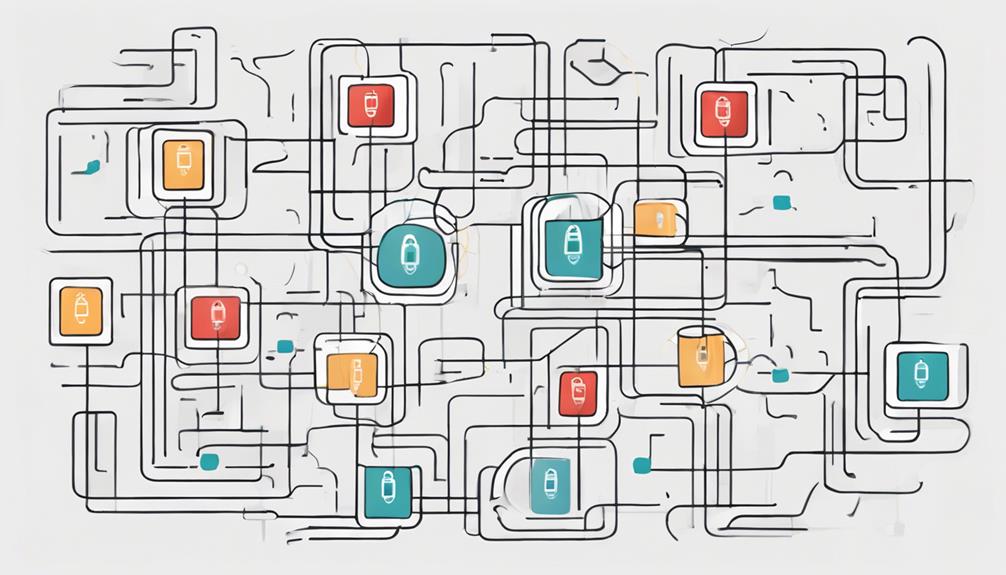
Blockchain technology in healthcare revolutionizes the secure management and sharing of medical records by ensuring tamper-proof storage. This innovative technology offers numerous benefits to the healthcare industry:
- Patient Empowerment: Blockchain allows patients to have control over their health data, enabling them to securely share it with healthcare providers when needed.
- Streamlined Processes: Blockchain applications can streamline various healthcare processes such as insurance claims processing and supply chain management, leading to increased efficiency and reduced costs.
- Smart Contracts: Through the use of smart contracts, blockchain can automate healthcare agreements, ensuring transparency and reducing the possibility of fraud.
Precision Medicine and Genomics
Utilizing genetic information to customize medical treatments for individual patients, precision medicine and genomics represent a groundbreaking approach in healthcare. Precision medicine involves tailoring medical interventions based on a patient's genetic characteristics, allowing for personalized treatment plans. Genomics, on the other hand, delves into an individual's genetic makeup to predict disease susceptibility and response to specific medications. This field has seen significant advancements, particularly in the development of targeted therapies for complex diseases like cancer.
Personalized medicine, driven by genomics, aims to enhance treatment efficacy while minimizing adverse effects. By analyzing an individual's genetic information, healthcare providers can identify specific genetic mutations that impact disease risk and treatment outcomes. Through genomic testing, healthcare professionals can offer tailored interventions that consider a patient's unique genetic profile.
The integration of genomics and precision medicine holds promise for revolutionizing healthcare by providing targeted, effective treatments that are customized to each patient's genetic composition. This approach marks a significant shift towards more precise and individualized healthcare solutions.
Cybersecurity in Healthcare Technology
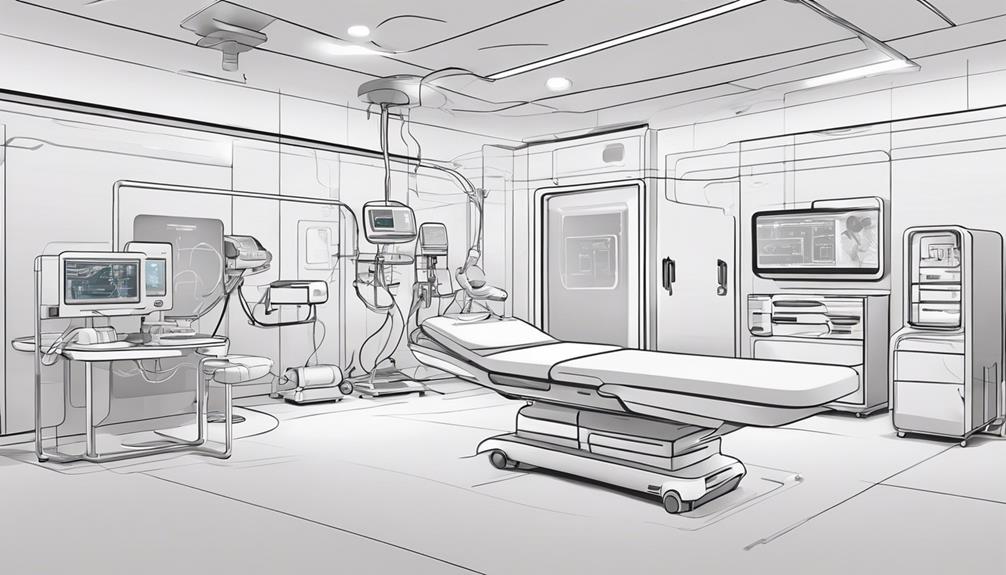
Effective cybersecurity measures are imperative within the healthcare technology landscape due to the increasingly sophisticated nature of cyber threats targeting sensitive patient data. Cybersecurity in healthcare technology plays a critical role in safeguarding patient information and maintaining the trust of individuals seeking medical services. Key points to consider in this domain include:
- Patient data in electronic health records is highly sought after on the black market, making it more valuable than financial data.
- Ransomware attacks on healthcare organizations are on the rise, posing a significant threat to patient privacy and safety.
- Securing interconnected medical devices and systems is a major challenge for healthcare organizations, as vulnerabilities in these systems can be exploited by cybercriminals to gain access to sensitive data.
Implementing robust cybersecurity measures such as encryption, access controls, and regular security audits is essential to protect patient information and uphold the integrity of healthcare systems. Non-compliance with cybersecurity regulations like HIPAA and GDPR can lead to severe consequences, emphasizing the critical need for a proactive approach to cybersecurity in healthcare technology.
Frequently Asked Questions
How Technology Has Benefited Healthcare?
Technology has significantly benefited healthcare through remote monitoring, telemedicine, wearable devices, virtual consultations, and AI diagnostics. These advancements have increased patient access to medical care, enabled real-time monitoring of vital signs, facilitated remote consultations, and provided early diagnosis through AI analysis. Integrating technology into healthcare has improved patient outcomes, enhanced proactive healthcare management, and revolutionized the way healthcare services are delivered.
How Technology Has Impacted Healthcare Reform?
Technology has significantly impacted healthcare reform through advancements in telemedicine, remote monitoring, digital records, wearable devices, and AI diagnostics. These innovations have improved patient access to care, facilitated better care coordination, enhanced data management, empowered patients to monitor their health, and enabled more accurate and timely diagnostics. Overall, technology has played a crucial role in transforming healthcare reform by making it more efficient, effective, and patient-centered.
How Is Electronic Technology Improving Healthcare?
Electronic technology is revolutionizing healthcare through remote monitoring, telemedicine, wearable devices, data analytics, and telehealth consultations. These advancements enhance patient care by enabling real-time tracking of vital signs, facilitating virtual consultations, promoting continuous health monitoring, analyzing large datasets for personalized treatment plans, and improving access to medical expertise. By leveraging these tools, healthcare providers can deliver more efficient, cost-effective, and patient-centered care.
In What Ways Has Technology Changed the Way Healthcare Systems Operate?
In recent years, technology has fundamentally altered the operational landscape of healthcare systems. Remote monitoring, telemedicine consultations, data analytics, wearable devices, and artificial intelligence have revolutionized the industry. These advancements have facilitated proactive patient care, streamlined processes, and improved decision-making through real-time data insights. The integration of these technologies has enhanced efficiency, accessibility, and overall quality of healthcare services, marking a significant shift in how healthcare systems operate.
Conclusion
In the grand tapestry of healthcare, technology acts as the weaver, intricately threading together innovation and efficiency to create a masterpiece of patient-centered care. From the seamless integration of electronic health records to the transformative power of artificial intelligence, each technological advancement adds a new dimension to the canvas of healthcare. As we continue to embrace these tools, we move closer to achieving a vision of healthcare that is not only advanced but also compassionate and accessible to all.
